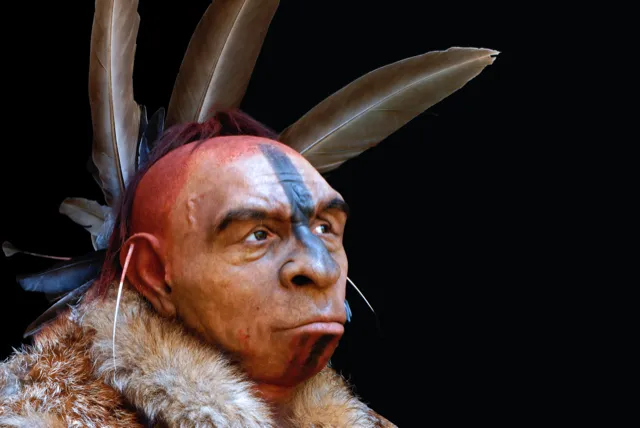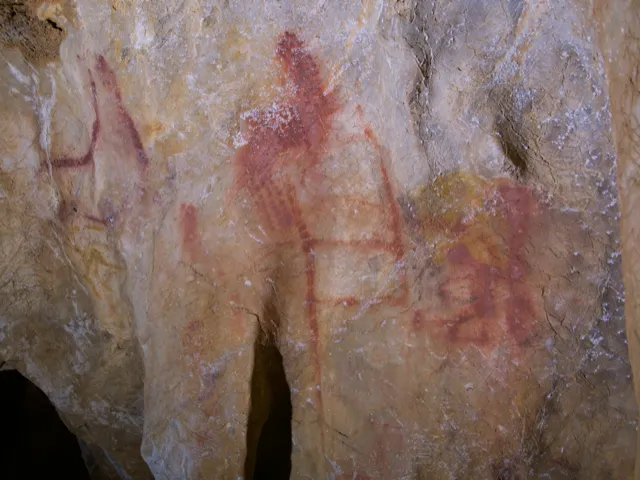In little more than a decade our understanding of the recent period of human evolution has been revolutionised. New excavations and the application of exciting scientific methods are yielding extraordinary insights to our ancient past and overturning previously-held truths.
We now know that as recently as 40,000 years ago there may have been six or more different lineages of humans on Earth including Neanderthals, Denisovans, the “Hobbits” of Flores (Homo floresiensis), Homo luzonensis on the island of Luzon in the Philippines, in addition to us (Homo sapiens).
We also know that we carry a genetic legacy from the period during which we overlapped with these lost cousins. And this genetic inheritance might have been one key to how we managed ultimately to become so successful and spread so widely across the planet.
Our species, Homo sapiens, evolved in Africa from around 300,000 years ago. Prior to 2010 the prevailing thought among scientists was that these people had very little, if any, contact with other now-extinct human relatives (the most well-known being the Neanderthals) as they left Africa and expanded outwards into Eurasia. Precisely when this happened is not known.
I believe that there were several out of Africa movements, broadly between 160,000 and 60,000 years ago, but the most important for our story were the more recent. In some archaeological sites in Europe there is a gap between the latest Neanderthal archaeological layers and the start of subsequent layers containing evidence for early Homo sapiens. This suggested that perhaps in these regions the two groups might not have even met one another.
Read more about Neanderthals:
- Neanderthals could talk like humans, study suggests
- Did Neanderthals have a society?
- 40,000-year-old yarn suggests Neanderthals had basic maths skills
In 2010, however, scientists in Leipzig, Germany, announced that they had sequenced the majority of the Neanderthal genome. Analysis showed that human beings do inherit a small amount of Neanderthal DNA and that there had, in fact, been interbreeding between our two groups.
This came as a great surprise to many at the time. The suggestion was made that the two groups may have met briefly, possibly somewhere in the Near East, with humans subsequently carrying low but similar levels of Neanderthal genetic ancestry to all parts of the world.
A few years later, in 2014, my research group at the University of Oxford discovered that, in Europe, Neanderthals and Homo sapiens had actually overlapped with one another for a considerable time: up to 5,000 years, before Neanderthals disappeared about 40,000 years ago. The disappearance of Neanderthals was therefore a longer and more drawn-out process than previously thought.
Between ~45,000 to 40,000 years ago, it seems, we were contemporaries and had ample time to meet and interact. New evidence I describe in my book The World Before Us suggests an even wider overlap, both in Europe and in other parts of Eurasia.
Given this co-existence and the genetic exchange that occurred, could there also have been cultural exchange between the two groups? Many palaeoanthropologists thought for decades that if there was cultural exchange it was likely to be one way: from the supposedly superior Homo sapiens to the less capable Neanderthals.

Recent work on the Neanderthals and their world has shown that, far from the backward cave dwellers widely popularised in the 19-20th Century, they were a capable, often sophisticated group of hunter gatherers present for more than 250,000 years, surviving through periods of often significant variability in climate. Evidence is emerging that prior to the arrival of modern humans they were doing certain things that were considered previously to be the exclusive domain of us – Homo sapiens.
Fascinating new evidence, for example, now suggests that Neanderthals might have been the first cave painters of Europe. We can date small concretions of calcium carbonate that have slowly grown over painted surfaces using traces of radioactive isotopes of uranium. Extremely old ages have been obtained, showing that some of the painted caves in Spain are more than 65,000 years old.
This is a time when Neanderthals were the sole occupants of Europe. Archaeologists assumed for decades that all early art drawn on cave walls was produced by modern humans. These new results challenge that view.
Similarly, we are also beginning to recognise evidence for Neanderthals behaving in other ways that we often term ‘behaviourally modern’; perhaps wearing ornaments made from eagle talons, decorating themselves with feathers, using mineral colourants and preparing skins probably for clothing using deliberately selected bone implements.
I wonder whether we ought to look at the overlap period evident in the archaeological record as one where there might have been an exchange of ideas, creativity and technology between the two groups as they met and interacted, rather that this being one way as previously thought.
Increasingly, we see evidence for periodic contact between these various groups, and for interbreeding between humans and others. Recent work that we published in April 2021has shown that the genomes of the earliest modern humans in Eurasia often contain long chunks of Neanderthal DNA. This indicates that interbreeding between the two groups occurred sometimes only a few generations before that person lived, since the DNA has not been subsequently broken up into smaller blocks with succeeding modern human-only generations (this process is called ‘recombination’). It is an extraordinary thought that 20 per cent or more of the entire Neanderthal nuclear genome can be mapped from across the genomes of living people.

Evidence is building that shows that the genetic variants we have inherited from these ancient liaisons – from Neanderthals but also from another group in eastern Eurasia called the Denisovans – have important implications for us today. These range from the positive (without Denisovan DNA Tibetans would not be able to live at altitude and New Guineans would not have the same levels of resistance to certain tropical diseases) to the less positive (genetic variants coding for type II diabetes, lupus and smoking addiction come from Neanderthals).
It is becoming increasingly apparent that ‘hybridisation’ between different human groups may have been crucial as our ancestors moved into new and challenging environments. Through hybridisation we were able to gain some rapid genetic benefits from human lineages that had been occupying these regions for millennia before. These benefits, along with other behavioural and technological adaptations that we see in the archaeological record, helped Homo sapiens to become a highly successful ‘invasive species’, moving into all parts of the planet and adapting to life there.
Why, then, did Neanderthals and other groups eventually disappear from the archaeological record? There are intriguing clues from demography mined from high coverage genetic analysis of human bones. DNA analysis of some late Neanderthals shows that they have long tracts of ‘homozygosity’, when one inherits two alleles on a gene locus that are identical in both parents suggesting that those parents must have been closely related.
This, and other evidence from population genetics and archaeology, supports the idea that Neanderthals were probably living in small groups and in low numbers generally. It is quite likely that no more than 5,000 Neanderthals might have lived across Eurasia at any one time. This might have been a key difference compared with Homo sapiens.
A slow trickle of newly arriving modern humans, without any substantial cognitive or behavioural advantage, might have been all that was required on the part of humans to consign Neanderthals to oblivion. Gradually we will also learn the fate of the other members of the wider human family that once lived on Earth and what role we had in their demise.
We have always thought of ourselves as unique. It turns out that in evolutionary time this uniqueness did not exist until yesterday.
The World Before Us: How Science is Revealing a New Story of Our Human Origins by Tom Higham is out now (£20, Viking).
- Buy now from Amazon UK, Bookshop.org or Waterstones
Read more about human ancestors: